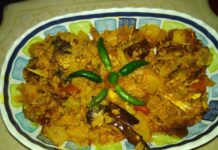Mahabharata chronicles the love story and marriage of Arjun and Chitrangada. World War II chronicles the tryst of liberation of the INA at kangla. The boxing world remembers the tryst of M C Mary Kom. Horse riders the world over who love polo trace their favourite game to here. Welcome to Manipur a jewel amidst the seven sisters of India. Yes the kingdom whose heir babrubahan defeated his own father mighty arjun is the place where the game of polo originated from and taken up by the britishers and popularized. When Netaji subhash Chandra Bose’s liberating INA unfurled India’s flag to celebrate liberation it was in Manipur the land of the mighty lokhtak lake. A state that is synonymous with M C Mary Kom is also home to another iron lady- Irom Sharmila Chanu. Iron sharmilla as she is popularly known has not had food or drink since 2000 and is on a fast protesting against atrocities in Manipur. Indeed Manipur is breathtaking in its beauty, pristine in the throes of the geet govindam that is found being sung in many a house hold, ferocious in its protest towards wrong. Life in these lands start early in the day and finish early too. Agriculture and tourism are major revenue earners, and when we talk of tourism can we be far from food.
Staple food for a typical Manipuri family is made of rice seasonal vegetables grown in the kitchen gardens and fish from local ponds. Typical aromatic herbs and roots are infused in the food to make it taste different from mainland food. The naga community of Manipur is also influenced by greater naga cuisine imbibing use of fermented products like akhuni and bamboo shoot. Singju (salad) kangshoi (stew) and eromba (mashed vegetables with fermented fish) are some of the typical dishes spread for you at a Manipuri dinner.
Today’s food journey is about eromba. It’s a low spice cook that is livened up with ample use of chilli, and is made as a mash of seasonal vegetables and fermented fish ngari. Eeru taana lonba is the origin of eromba. Essentially meaning stirring and mixing watery, over the years fast pronunciation and warbling over generations has evolved the word eromba. A vegetarian variety sans the ngari is also cooked for rituals and shrine offerings, though the typical version is non vegetarian and nothing but the ngari will suffice as an ingredient. While a variety of seasonal vegetables can be used we will focus on yendem beans, potato and of course ngari as our major elements.
Potato ½ kg
Rohu 1 piece (about 200 gms)
Bhut joluka (Naga Chilli) 8-10
Long beans 300 gms
Dried yendem 300 gms
Fermented fish (Ngari) 250 gms
Salt to taste
Dhaniya (Coriander) leaves 1 sprig
Pudina (mint) 1 sprig
One of the critical elements of the cook is the ngari and its preparation is a long drawn one. Typically fish are sundried with an oil smearing for about 5 days. They are then covered with gunny bags for a few more days and then pressed. This is then packed off in special earthen vessels called chaphou, using an oil smearing. The mouth is now sealed off using a paste, covering leaves and mud and left to stand and ferment for periods between 4 month and upto a year. The chapou are broken and ngari retrieved from within stored in smaller quantities. Care is taken that the breaking of the chapou, to retrieve the ngari happens only on dry days to prevent further fungal deterioration.
In preparation of the cooking we will first peel and wash the potatoes as also the beans both long bean variety and the typical yendem one. Now pressure cooker the vegetables along with the bhut joluka for 4 whistles. This will ensure that the vegetables are tender and easily mashed. Separate the vegetables and the chilli and set aside. Fry the Rohu fish and set aside. Chop the Dhaniya and pudina and set aside for garnishing.
Now mash the vegetables thoroughly to make and even consistency and set aside. The ngari fried fish and the boiled bhut joluka is also mashed together. This is not a mean task and not for the weak hearted as the smell will be very strong and pungent. Once a smooth paste is made, this is now mixed with the mashed vegetables and combined evenly. Add a bit of water, about ½ cup and stir and mix till you have smooth gravy. Garnish and transfer to a serving bowl and serve with steamed rice.
As u can see while making the eromba we have not used any oil, or spices. The two primary tastes that will be highlighted will be the fiery hot of the bhut joluka and the sour of the fermented fish. This combines with the natural flavors’ of the vegetable which blend in during mashing to create something unique.
Mothers across Manipur make the ngari patiently and much love and I am sure many a smile goes into making this for the loved ones. So when you get your batch and roll your sleeves to make the eromba, smile a bit more thinking of her, lover her just a bit more and pour that into the making of the eromba. Bon appétit.







